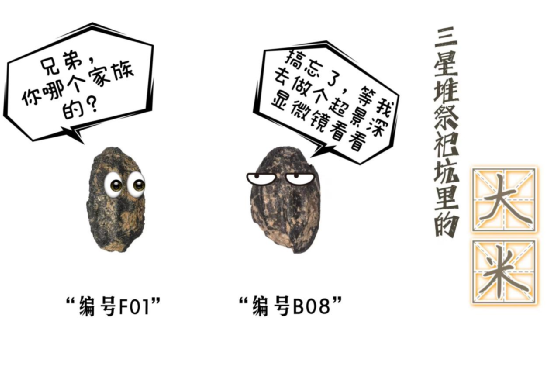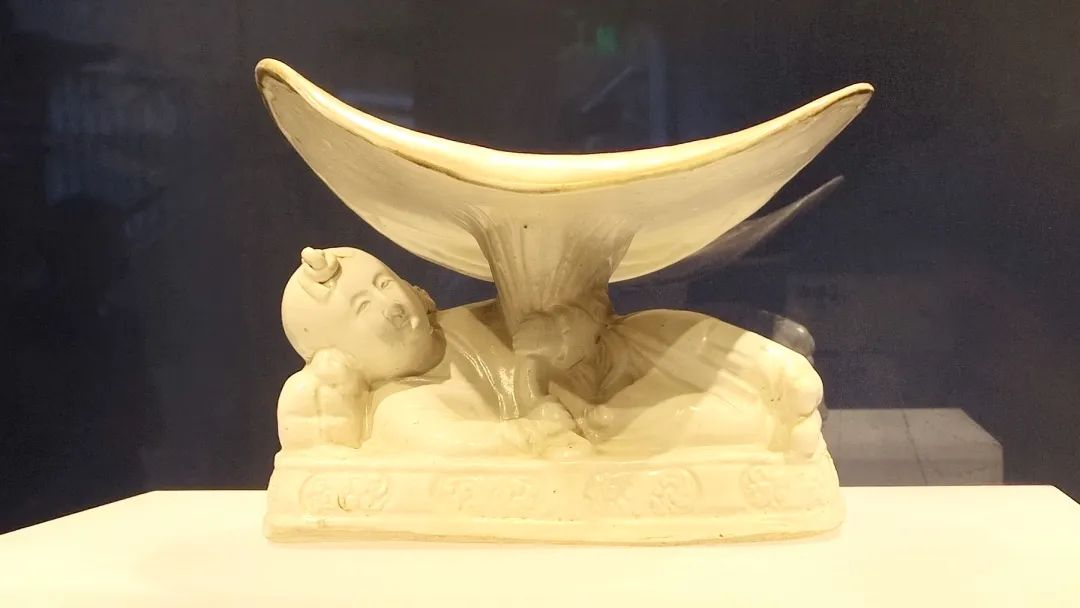A 3000 -year -old rice
Author:Banyue talk about new media Time:2022.06.13
I am a rice in the "Sacrifice Pit", Sanxingdui, Sichuan, China. I am in their 3,000 years this year. It looks older, but it is not a high school in our rice ethnic group.
3000 years ago, the south bank of the duck, the water and soil of Samsung Village were rich. I was still a golden rice, falling on the sacrifice table. The subjects of the ancient Shu Kingdom lived in this fertile soil, sowing grain crops such as rice and millet, and the sunrise, sunset, obtained the energy of breeding life, and looking forward to the next harvest year.
3000 years later, the excavation site of the archeological site of Samsung Dou. I was awakened by a noisy sound, and I saw transparent houses and people wearing white clothes. They transferred the soil I was sleeping to the laboratory. A three -dimensional three -dimensional rice appeared on the top.
At first, I didn't believe that the rice on the screen was me, but I just slept. The original gold and full valley grains were now dark and stunned. Dr. Wan Jiao, an associate researcher at the Sichuan Provincial Institute of Cultural Relics and Archeology, said that this is called carbonization. Only plants who have been trained in this state can be sleeping for thousands of years. Dr. Tenn also gave me a name, "Number F01".

Today, the ancient Shu Kingdom has long been annihilated in the long history, but archaeologists can search from me from me 3000 years ago.
In 1986, the Sanxingdui site reappeared the world for the first time. At that time, the technical means of plant archeology were relatively lacking, causing plant relics to bury it under the earth for decades. Since 2012, archeologists in Sichuan have begun to carry out plant archeology at the Sanxingdui site, restore the impact of agricultural production activities on the development of social production and life. By studying the interaction of plants and crowds, they interpret the history of no text records. In 2022, I woke up at the "Sacrifice Pit" site in Sanxingdui, and people further confirmed that the rations of the ancient Shu Kingdom were mainly rice.
Every day I watch Dr. Wan's research in the ancient seeds of 1 mm in the laboratory, and often sit in one day. Looking for carbonized seeds, we must first float the soil -separate the mixed soil carbon layer through water was wasolated; then choose one by one under the microscope, extract the seeds, and then separate the category of rice, millet and other doors; The 700,000 yuan super mirror showed a picture under the microscope, and the three -dimensional model was generated in the real time, which facilitated the body and clearer observation.
Next, the seeds will be placed in a special container, numbered, and enter the database. The database records the seeds of the seeds, floating samples and other information. You can also see whether the seeds are complete, the degree of carbonization, and what work to do in the next step. Each carbonized seeds have their own "identity information".
I am about 2 mm wide, 3.6 mm long, uneven surface, and some clay, which is a flat carbonized rice. Dr. Wan said that scientific researchers will choose some seeds to do carbon-14 tests and carbonized seeds to stabilize isotope analysis to accurately grasp the distribution and relics of carbonized plants. Generally, the samples with poor appearance, because after the experiment is done, the seeds will break the bones. Thinking of this, I can't help but be a little nervous.
Speaking of the topic, my ancestors were native to the Yangtze River Basin of China, providing energy for human activities. We have "domesticated humans" very early and let it live around the field in the form of tribes. In the Neolithic Site of the Yellow River and the Yangtze River Basin, plant archaeologists have found carbonized rice relics. Among them, the middle and lower reaches of the Yangtze River may be the earliest "domestication".
We don't like big rocks, humans are going to plow the ground; we don't like to fight with other plants with water and nutrients, and humans will pull out weeds; we don't like to get sick, human beings have to spend time every day to collect feces and pick. bucket. In this way, in the Yin and Shang dynasties, the rice ethnic groups had already occupied an important position in agricultural production. In the Yinxu Oracle essay unearthed in Anyang, Henan, there is already a record of "rice" and a record of divination of rice production. And at that time, people knew that the ditch can be ditching in the rice fields and water drainage irrigation, which shows that productivity has developed to a certain level. I am a rice born in Sanxingdui, Sichuan. Dr. Tan said that including me, the wide rice relics in the Chengdu Plain proved that ancient Chinese civilization was not as saying in the ancient texts, "the sound of chickens and dogs smells each other, and the old death is not the same." Chinese civilization is pluralistic, and long -distance communication actually exists very early, and profoundly affects the cultural process between several cultural areas. As early as 3,000 years ago, Sanxingdui was closely linked with the Central Plains and the middle and lower reaches of the Yangtze River, developed in cultural exchanges and mutual learning, and climbed the ladder of civilization step by step. (Dr. Wan Jiao of the Sichuan Provincial Institute of Cultural Relics and Archeology also contributed to this article)
Source: Banyue Talking about the original title of the new media: "A Sanxing Dingya Rice Past and present Life"
Reporter Banyue Talk: Lu Yanyi Tang Wenhao | Editor: Zheng Xuejing
- END -
Dingyao is famous for the world. Why does it come to Guangzhou recently?

Southern magazine all media reporter 丨 Chen BingqingCorrespondent 丨 Huang Qiaoha...
"Piano Life" brought by "Yuanle Xiaosha" for the old man of flower armor

Recently, the weather has become hot, and my old mother in the family asked me to ...